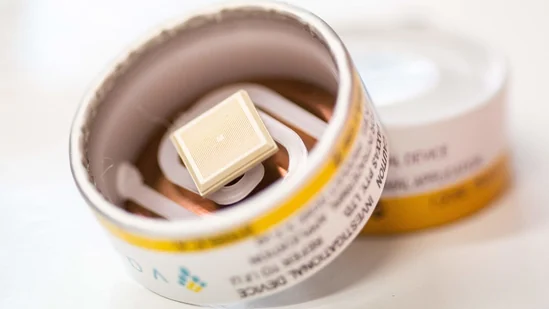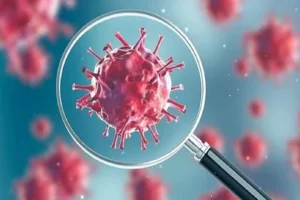A skin patch for administering Covid-19 vaccines gives greater immune protection than traditional injections with a needle, according to a study in mice. The patch can be stored at room temperature and be self-administered, making it suitable for use in places that lack cold storage facilities and medical staff, according to a new a study published in the journal Scientific Advances.
The Australian-US team used patches measuring one square centimeter that were dotted with more than 5,000 microscopic spikes, David Muller, a virologist at the University of Queensland and co-author of the paper, told AFP.
The researchers tested the skin patch with a Covid-19 vaccine candidate called HexaPro, developed by researchers at the University of Texas at Austin, which is still being tested in clinical trials but is more heat stable and cheaper to make than existing vaccines.
Also read: Zydus Cadila’s India-made 3-dose Covid vaccine approved for use by expert panel
The HexaPro vaccine was stable for at least one month in the skin patch when stored at 25°C and for one week at 40°C.
A trial of the Covid-19 vaccine skin patch in people will begin next year. If it is approved, it could be used to deliver booster doses and potentially to protect against new virus strains, since it is easy to adapt HexaPro to different variants, says Muller.
Muller and his colleagues have spent years developing a skin patch that can deliver influenza, polio, dengue and other vaccines without requiring needles or cold storage. They wondered if the same technology could be used for Covid-19 vaccines.
The centimetre-wide skin patch is dotted with 5000 tiny plastic spikes, each a quarter of a millimetre long and coated with dried vaccine that is more stable than liquid forms. The patch is applied with an applicator that painlessly presses the vaccine into the upper layer of the skin.
Vaccines delivered this way tend to elicit stronger immune responses because the skin is full of immune cells, says Muller. For example, when the flu vaccine is administered via this skin patch, a sixth of the normal dose can be used because it produces a stronger response.
Mice treated with the patch developed more coronavirus antibodies than those injected with the vaccine and were completely protected from getting sick, even with a single dose.




















